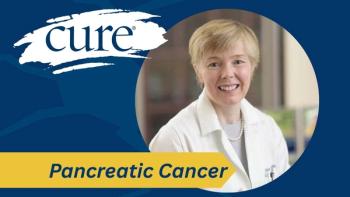
Less May Mean More in Treatment of Low-Risk Breast Cancer
In treating low-risk breast cancer, adding novel agents isn't always necessary, Hope S. Rugo says.
When treating breast cancer, oncologists should carefully consider the benefits, cost and time and commitment before prescribing treatment, says Hope S. Rugo. While there has been an increase in promising novel agents, physicians should keep in mind that more therapies don’t always mean better outcomes.
“We have built very successful treatments that have improved survival in patients with breast cancer. The challenge we have now is to not keep adding more and more treatments as we look for better therapies to cure that group of patients who will have a recurrence,” Rugo said during the 2016 International Congress on the Future of Breast Cancer. “At the same time, we also need to understand that, for the majority of patients, we are doing a pretty good job. We don’t need to add more toxicities and costs by giving them additional therapies.”
Therefore, when it comes to breast cancer treatments, sometimes less is more, said Rugo, professor of Medicine and director of Breast Oncology and Clinical Trials Education at the University of California San Francisco Helen Diller Family Comprehensive Cancer Center. Now that there is a much better understanding of the heterogeneity of breast cancer, tumor biology and genomic testing should be utilized in order to tailor systemic therapy to each individual patient’s tumor.
“What we are focusing on is the idea of looking at the patient and not just looking at whether they have a bigger tumor or a smaller tumor, node-positive or node-negative disease, or high- or low-grade disease, but actually taking all of those pieces and putting them together. We need to take this, along with the patient’s age and their medical issues, and try to balance it to get the best therapeutic efficacy with the least toxicity, time and effort, cost, etc.,” said Rugo.
While the field of breast cancer has evolved from the days of defaulting to chemotherapy for every patient, much work still needs to be done to individualize treatment, she said.
Current research still focuses on adding new therapies to standard regimens, rather than determining if the standard-of-care approach is enough for patients with low-risk disease. This approach is especially detrimental in the design of clinical trials, said Rugo.
“Clinical trials that include patients who have low-risk disease right now have a higher chance of failure,” she added. “Unless you have something that makes a massive impact on that high-risk population, you are going to lose the impact because of patients with low-risk disease who you have inadvertently included in your population. You have low benefit and low power to see the benefit in the highest-risk population, which means that you lose and the patients loses. Then, we don’t go forward with drugs that probably would have changed the outcome.”
For example, this challenge was observed in the phase 3 ALTTO trial, which looked at the dual HER2-blockade Tykerb (lapatinib) and Herceptin (trastuzumab) versus Herceptin alone in patients with early HER2-positive breast cancer.
The findings, which were first released at the 2014 ASCO Annual Meeting, indicated that treatment with Tykerb plus Herceptin, either sequentially or concurrently, was associated with a high rate of disease-free survival. However, the combination did not produce a statistically significant advantage over Herceptin alone.
“There are obvious issues with drug tolerance that complicate this analysis, but the most important factor was that this low-risk group of patients was going to do really well with just chemotherapy and trastuzumab,” said Rugo.
The TAILORx trial also demonstrated that additional treatment isn’t always necessary for low-risk patients. The randomized trial was designed to prospectively determine whether chemotherapy improved clinical outcomes in patients with a mid-range risk score (RS). It also aimed to confirm that patients with a low RS had excellent outcomes with hormonal therapy alone.
All patients in the trial had estrogen receptor (ER)-positive, HER2-negative, node-negative breast cancer. Low-risk was defined as less than 11 using Oncotype Dx. Patients with a mid-range RS of 11 to 25 were randomized to chemohormonal therapy, the standard treatment arm in accordance with NCCN guidelines—at the time—versus hormonal therapy. Patients with a RS less than 25 were assigned to chemoendocrine therapy; patients with a RS of less than 11 were assigned to hormonal therapy alone.
In patients with a RS less than 11 who received hormonal therapy alone there was a 7.3 percent distant recurrence rate at 10 years. In patients with an RS greater than 25 who received chemotherapy plus hormone therapy, there was 16.1 percent distant recurrence rate at 10 years. In the trial overall, there was a five-year invasive disease free-survival rate of 93.8 percent and a five-year overall survival rate of 98 percent.
“This is a group of patients who really don’t need most treatments,” said Rugo. “These patients clearly don’t need more than hormone therapy, but I think we are still really learning what to do with that intermediate-risk group of patients. Right now, this is not a group of patients who necessarily need chemotherapy; this is a group where we have to use your clinical pathologic information to try and tweak the information or, potentially, send out an additional genomic test.”
There are numerous other trials that demonstrate that, for certain low-risk patients adding novel treatments isn’t necessary. However, while the less-is-more approach should be considered for low-risk patients, there are still high-risk patients who will benefit from more novel treatments, said Rugo.
The focus should be on identifying which patients will have good responses or have high-risk disease using intrinsic subtyping and immune signatures, she added.
“We must always ask if all patients need all therapies,” said Rugo. “This is what personalized medicine is all about.”





